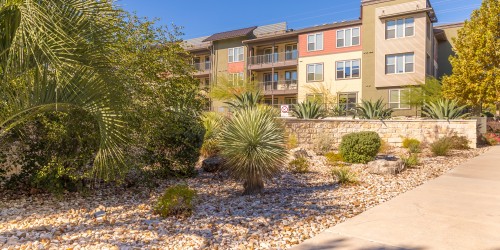I’ve talked about how to save water in a landscape and given you a crash course in Xeriscaping, but what plants are best suited for the long, hot and dry Texan summers? If you haven’t already considered drought-resistant plants for your yard or garden, it’s likely you soon will!
In landscaping, a good rule of thumb to use for choosing plants is to choose native plants. The best plants for Texas are all originally from the state. Keep one thing in mind: our climate varies widely. The west is extremely arid and the west is more humid.
Without further ado, here’s a list of some of my favorite plants to use in Austin, College Station and Houston landscapes.
Shrubs
- Agave — If there ever was a stereotypical desert plant, this is it. Known for its sweet nectar, this statement-making shrub is native to the hot and arid regions of northern Mexico and the Southwestern United States. It can grow tall, has a sizable spread and best of all requires no maintenance. An ideal spot for an agave plant would be in a bed next to a door or entryway. While you won’t be getting any tequila from Texan agave, you’ll certainly get a gorgeous, low maintenance plant.
- Red yucca — This ornamental shrub is very common in landscapes that require little water or maintenance. Its deep rose-pink flowers sit on top of clumps of slender, drought-tolerant foliage. Native to the Chihuahuan Desert, the Red Yucca is evergreen and blooms almost year-round. These shrubs add great texture and a pop of color to rock gardens or as landscape accents.
- Agarita — This shrub has many names, but most of us know it as Agarita, Agarito, Currant-of-Texas or Wild Currant. Reminiscent of the Holly Plant, the Agarita plant’s yellow flowers turn into bright red berries in the summer. A low maintenance, drought-tolerant evergreen.
- Texas sage — Another ornamental, woody shrub that can be found in landscapes throughout Texas. It flowers frequently, bursting with lavender bloom. The only real maintenance it typically needs is pruning.
Grasses & groundcover
- Horsetail — Otherwise known as Puzzlegrass or Snake Grass, Horsetail is native to Texas, spreads easily and can be cut short or cropped for a modern, clean look.
- Bamboo muhly — A soft-textured, ornamental grass with lance-like foliage is silver-green in color and turns an attractive straw color in the winter. This plant is both native to Texas and deer resistant!
- Mexican feathergrass — Mexican Feathergrass is very drought tolerant and its elegant, fountain-like form has feathery seed heads. It shows lots of movement and looks wonderful in the wind!
Perennials
- Autumn sage — This Texas-native perennial comes in many different shapes, sizes and colors. It’s so named because it blooms profusely in the autumn. Colors include red, pink, purple and yellow.
- Esperanza — Also known as Yellow Bells, yellow trumpet flower or yellow alder, the Esperanza is easily recognizable for its large masses of scented, trumpet-shaped flowers.
- Lantanas — Once established, these flowers require little maintenance outside of a good watering once a week. Their blooms come in a variety of colours.
- Texas rock rose — During the heat of summer, these deep, rose-pink hibiscus-like flowers open in the morning and close up in the early afternoon. These plants thrive in nearly all conditions thrown at them, whether very dry or regularly watered.
If you’d like to bring some of these native Texas plants to your commercial landscape, give us a call! Here’s to hoping your property stays green, your plants stay alive, and you stay cool this summer.



